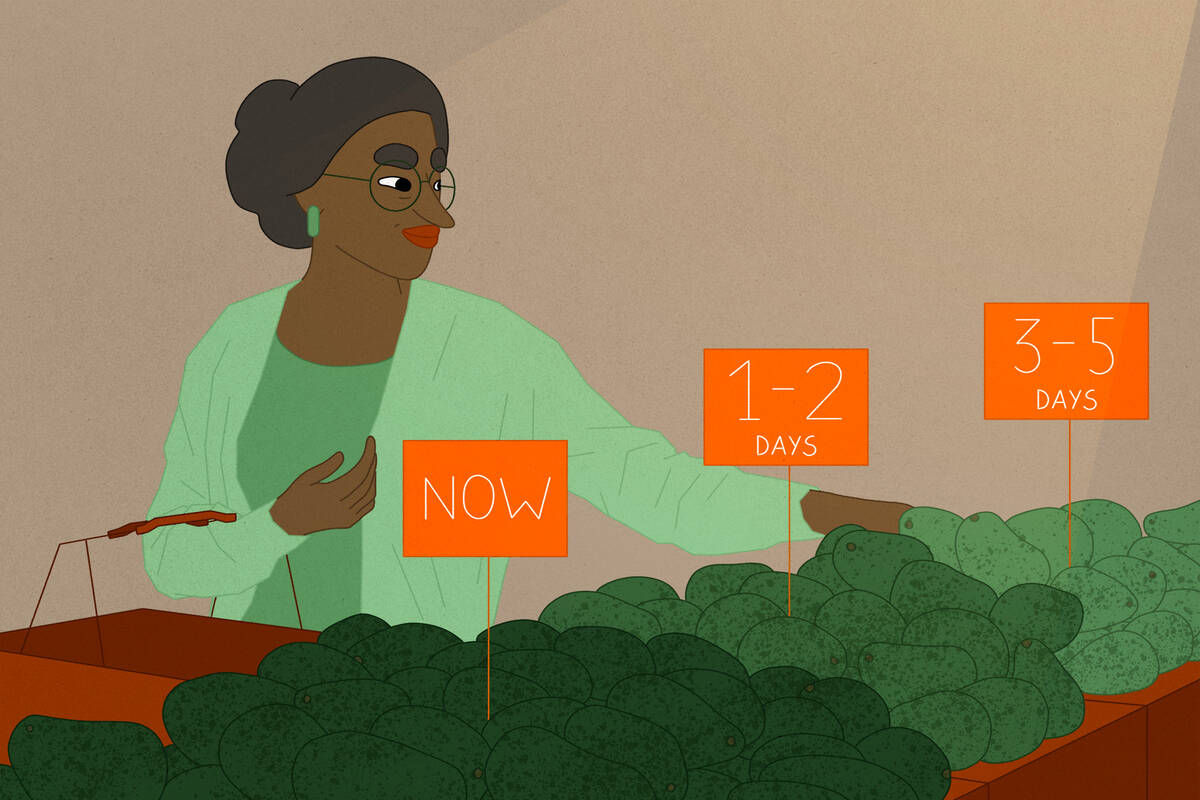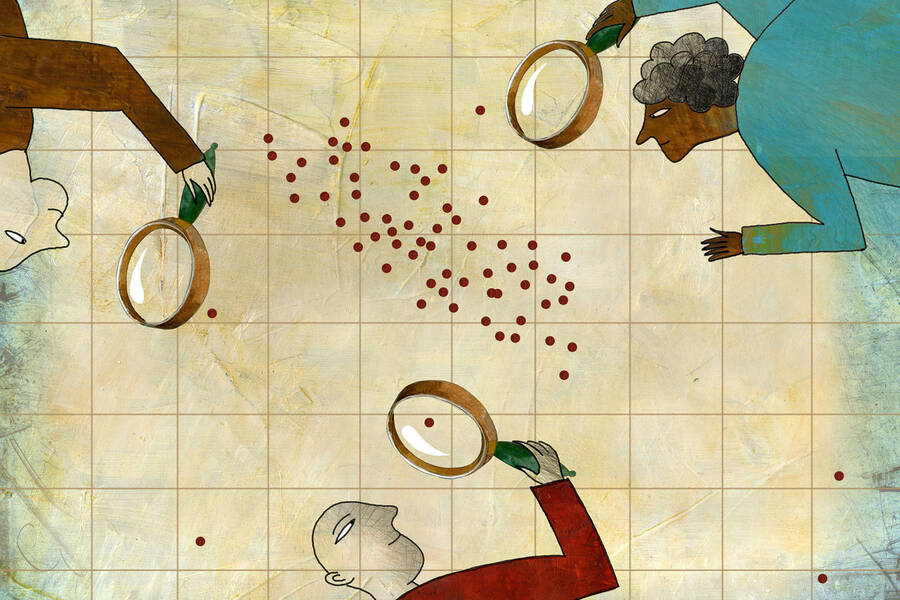Marketing Apr 5, 2023
To Better Understand Your Customers, Think Like a “Consumer Anthropologist”
Engaging consumers in their natural habitat helps you glean insights that would never be visible in a spreadsheet.

Lisa Röper
Inherent in any marketer’s job is the task of predicting what customers will buy. To do this, they often comb through sales data to discern what has gotten people to open their wallets in the past. But missing from this data is an understanding of why consumers decide to buy a product—or not.
“When you look at consumer behavior, it’s like there’s a firewall between people’s behavior and the motivation behind it,” says Gina Fong, “and you’ve got to break through that firewall.”
To access that deeper understanding, Gina Fong engages with customers in their natural habitat: as they order coffee, choose their work outfits, and scrub their floors. As a consumer anthropologist, Fong gains information from these encounters that would never be visible in a spreadsheet.
“There’s a saying in anthropology about making the unfamiliar familiar,” says Fong, a clinical assistant professor of marketing at the Kellogg School and the principal at Fong Insight, a marketing consulting firm in Chicago. “My goal is to make consumers feel more familiar to brand teams so these teams can figure out how to surprise and delight them.”
Fong offers three tips for digging beyond the data to understand how to better reach customers.
Seek insights, not just data
When clients hire Fong, they often have plenty of data about how customers behave, but much less insight about what motivates customers to behave as they do. So when a brand launches a new product that fails to gain traction or is seeking opportunities for its next innovation, looking beyond the data for insight into consumers’ behavior can provide new courses of action.
“Big data’s having a real moment right now,” Fong says. “Numbers don’t lie—and big numbers sometimes give people more confidence in the data. But they only give you the what. Consumer anthropology and qualitative research are there to address the why behind people’s choices.”
For example, a colleague of Fong’s loved eating avocados, but he had stopped purchasing them in the grocery store. Looking solely at patterns in the data, the store’s brand team might conclude that he and others like him didn’t like avocados anymore, or that avocados had become too expensive. Armed with this information, the team might react by discounting avocados or displaying them in another part of the store.
But his motivation for passing up avocados was more complicated.
“He really liked avocados, but he didn’t know how to pick one when it was perfectly ripe,” Fong says. “Either the avocado would ripen too fast and spoil, or it would take too long to ripen, and he would forget about it. This was frustrating to him, so he just punted the whole activity.”
On a recent store visit, he saw a display with avocados categorized in three groups: “ripe today,” “ripe in a couple of days,” and “ripe in four to five days.” This has led to him once again buying avocados.
Fong recommends building a querying stage into your market research, where your team gets out from behind the data and interviews shoppers to better understand the reasons why the numbers look the way they do.
“People get into a trap when they think they’ve done the job of market research by conducting a survey,” Fong says. “They think they’ve crossed the finish line, but they’ve only gotten to the 50 yard line. As a company, if you understand the insight that he doesn’t know how to pick them, it helps you create effective solutions.”
Inhabit others’ perspectives
At the core of consumer anthropology is taking the perspective of customers. Yet somewhat counterintuively, Fong typically begins this process by focusing on the questions she might have about a brand she is studying.
Recently, Fong and her colleagues were looking for insights that might drive donations to a small-business microlending platform in Africa. The group’s research started with everyone reflecting and writing a short essay on what charitable giving means to them.
By reflecting on their own emotional connections to charitable giving, they hoped to develop a set of open-ended questions that they could then use to identify the motivations and emotions of the platform’s future donors.
“My goal is to make consumers feel more familiar to brands so they can figure out how to surprise and delight them.”
—
Gina Fong
But using this kind of self-reflection wisely requires taking some extra steps, she says.
“Before we interviewed potential donors for this site, we had to understand how similar or different we were from the target audience and why,” Fong says. “We had to identify our biases so we could check them at the door, because we might have a completely different outlook on charitable giving than the people we’re soliciting, and that may cloud our judgement.”
Checking your biases at the door makes your team more likely to ask open-ended questions that seek discovery. For example, if you think charitable giving is primarily about sacrificing your own needs for someone else’s, that might lead to a question such as “Why is charitable giving a sacrifice for you?” But if your subject’s motivation is helping in small, incremental ways, the word “sacrifice” can tinge the conversation.
Because at the end of the day, it’s not about you—it’s about your customers.
“I’ve had marketers get to know their consumers so well that they work to keep their stories alive long after the research is conducted,” Fong says. “They’ve put framed photos of their customers in their offices or brought cardboard cutouts of them into meetings to remind themselves of the specific people they want to serve.”
Transform Insights into Action
Ultimately, getting closer to consumers means not only understanding why they make certain decisions now, but also improving the ability to design campaigns that are responsive to those underlying motivations. Once marketers glean insights from their customers, they can plan their next moves with greater confidence.
“Think about your spouse or partner,” Fong says. “When you come home from a long day of work, they have made dinner or otherwise predicted what you’ll need when you cross the threshold. When brands are able to do this, it feels like, ‘You get me.’”
A few years ago, Fong worked with a trash-bag company that had a segment of customers willing to spend double to triple what a typical customer might spend on the right trash bag. The issue was that the company didn’t know why these consumers were so deeply invested in a utility product.
Through Fong’s ethnographic research, she discovered that this segment of customers lived in high-rise apartments or walk-up buildings. Every day, they would have to drag their trash bag across a hallway or down the stairs to the dumpster.
“If their trash bag broke at any point in the process, they would be at least 20 minutes late to work,” Fong says. “For them, the trash bag was an investment in their ability to start their day on the right foot.”
Equipped with this insight, the company was able to better differentiate itself from competitors in its advertising by promoting the bags’ toughness.
In another study, Fong worked with a cleaning brand whose new, automated products were being rejected by its core consumers. As Fong watched them clean their homes, she realized that these customers believed in the power of their own arms to get surfaces really clean.
“It was no surprise why they were rejecting all these gizmos and gadgets,” she says. “These were old-fashioned people who wanted to get on their hands and knees and scrub. Knowing this helped the company develop new fragrances and more environmentally friendly packaging, without sacrificing the formula of their time-tested products.”
Amy Merrick is a freelance writer based in Chicago.



